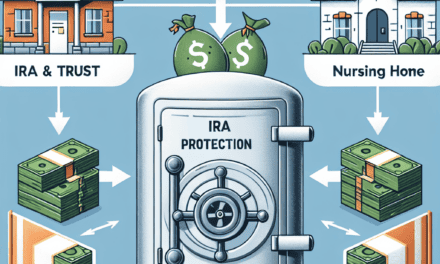“Top Telecom Showdown: AT&T vs. Verizon – Investing in Tomorrow’s Connectivity”
Introduction
In the ever-evolving landscape of telecommunications, investors often turn their attention to industry giants like AT&T and Verizon, two of the most prominent players in the sector. Both companies have established themselves as leaders in providing wireless services, broadband, and digital entertainment, making them attractive options for those looking to invest in telecom stocks. However, choosing between AT&T and Verizon requires a careful examination of their financial performance, growth strategies, and market positioning. This introduction delves into a comparative analysis of AT&T and Verizon, highlighting key factors that potential investors should consider when evaluating these top telecom stocks.
Market Performance: Analyzing AT&T and Verizon’s Stock Trends
In the ever-evolving telecommunications industry, AT&T and Verizon stand as two of the most prominent players, each with a storied history and a significant impact on the market. As investors seek to identify the top telecom stock, a thorough analysis of the market performance and stock trends of these two giants becomes essential. By examining their recent trajectories, financial health, and strategic initiatives, one can gain a clearer understanding of their positions within the industry.
AT&T, a company with roots dating back to the late 19th century, has undergone numerous transformations to maintain its relevance in the modern era. In recent years, AT&T’s stock performance has been influenced by its strategic decisions, including its foray into the media sector with the acquisition of Time Warner. This move, while initially met with skepticism, was aimed at diversifying its revenue streams and capitalizing on the growing demand for content. However, the subsequent spin-off of WarnerMedia to merge with Discovery highlighted AT&T’s renewed focus on its core telecommunications business. This strategic pivot has been reflected in its stock trends, as investors assess the company’s ability to streamline operations and reduce debt.
Conversely, Verizon has maintained a more traditional approach, concentrating on strengthening its telecommunications infrastructure and expanding its 5G network. This focus on core competencies has allowed Verizon to maintain a stable market position, appealing to investors seeking reliability and steady growth. Verizon’s stock trends have generally mirrored its commitment to enhancing network capabilities and customer experience, which are critical factors in retaining and expanding its subscriber base. The company’s strategic investments in 5G technology have positioned it as a leader in the next generation of wireless communication, a factor that continues to influence its market performance positively.
When comparing the financial health of AT&T and Verizon, both companies exhibit strengths and challenges. AT&T’s efforts to reduce its debt burden have been a focal point for investors, as the company seeks to improve its balance sheet and allocate resources more efficiently. This financial restructuring is crucial for AT&T to remain competitive and agile in a rapidly changing industry. On the other hand, Verizon’s financial stability is underscored by its consistent revenue generation and disciplined capital allocation. The company’s ability to maintain a healthy dividend payout ratio further enhances its appeal to income-focused investors.
In terms of stock trends, AT&T and Verizon have experienced fluctuations influenced by broader market conditions and industry-specific developments. AT&T’s stock has shown volatility, partly due to its strategic shifts and the challenges of integrating and divesting media assets. However, its renewed focus on telecommunications and efforts to enhance operational efficiency have the potential to stabilize its stock performance in the long term. Meanwhile, Verizon’s stock has demonstrated resilience, supported by its strong market position and commitment to technological advancements. The company’s emphasis on expanding its 5G network and exploring new revenue streams, such as private networks and edge computing, provides a solid foundation for future growth.
In conclusion, the decision to invest in AT&T or Verizon ultimately depends on an investor’s risk tolerance and investment strategy. AT&T offers the potential for growth through its strategic realignment and debt reduction efforts, while Verizon provides stability and consistent returns through its focus on core telecommunications services. As the telecommunications landscape continues to evolve, both companies remain integral to the industry’s future, each offering unique opportunities and challenges for investors to consider.
Dividend Yields: Comparing AT&T and Verizon’s Payouts
When evaluating investment opportunities in the telecommunications sector, dividend yields often play a crucial role in decision-making. AT&T and Verizon, two of the largest telecom companies in the United States, are frequently compared by investors seeking stable income through dividends. Both companies have established themselves as reliable dividend payers, but their approaches to dividend payouts and financial strategies differ, offering unique advantages and challenges to potential investors.
AT&T has long been recognized for its attractive dividend yield, which has historically been higher than that of Verizon. This higher yield can be appealing to income-focused investors who prioritize immediate returns. AT&T’s commitment to maintaining a robust dividend payout is evident in its consistent distribution of dividends over the years. However, it is essential to consider the sustainability of these payouts. AT&T has faced significant financial challenges, including a substantial debt load, partly due to its ambitious acquisitions and investments in media and entertainment. These financial obligations have raised concerns about the company’s ability to sustain its high dividend yield in the long term.
In contrast, Verizon has taken a more conservative approach to its dividend strategy. While its yield may not be as high as AT&T’s, Verizon has demonstrated a strong commitment to financial stability and prudent management. The company has focused on strengthening its core telecommunications business, investing in network infrastructure and technology to maintain its competitive edge. This focus on operational efficiency and strategic investments has allowed Verizon to maintain a healthy balance sheet, which supports its ability to continue paying dividends consistently. For investors who prioritize long-term stability over immediate high yields, Verizon’s approach may be more appealing.
Transitioning from the comparison of dividend yields to the broader financial health of these companies, it is important to consider how their respective strategies impact their overall performance. AT&T’s diversification into media and entertainment, while ambitious, has been met with mixed results. The integration of these new business segments has been challenging, and the company has had to navigate a rapidly changing media landscape. This has led to fluctuations in its financial performance, which in turn affects its ability to maintain its dividend payouts. Investors must weigh the potential for growth in these new areas against the risks associated with such a diversified business model.
On the other hand, Verizon’s focus on its core telecommunications operations has provided a more stable foundation for its financial health. By concentrating on enhancing its network capabilities and expanding its 5G infrastructure, Verizon has positioned itself to capitalize on the growing demand for high-speed connectivity. This strategic focus not only supports its dividend payouts but also offers potential for future growth as the demand for advanced telecommunications services continues to rise.
In conclusion, when comparing the dividend yields of AT&T and Verizon, investors must consider more than just the immediate returns. While AT&T offers a higher yield, its financial challenges and diversified business model present potential risks. Conversely, Verizon’s conservative approach and focus on core operations provide a stable foundation for consistent dividend payouts. Ultimately, the choice between these two telecom giants depends on an investor’s priorities, whether they seek higher immediate yields or long-term stability and growth potential. By carefully evaluating these factors, investors can make informed decisions that align with their financial goals.
Growth Strategies: How AT&T and Verizon Plan to Expand
In the ever-evolving telecommunications industry, AT&T and Verizon stand as two of the most prominent players, each with distinct growth strategies aimed at expanding their market presence and enhancing shareholder value. As these giants navigate the complexities of a rapidly changing landscape, understanding their strategic approaches provides valuable insights into their future trajectories.
AT&T, with its rich history and expansive network, has embarked on a multifaceted growth strategy that emphasizes both technological advancement and content integration. A key component of AT&T’s strategy is its focus on 5G technology, which promises to revolutionize connectivity with faster speeds and lower latency. By investing heavily in 5G infrastructure, AT&T aims to capture a significant share of the burgeoning market for next-generation wireless services. This investment not only positions AT&T as a leader in mobile connectivity but also opens up new revenue streams in areas such as the Internet of Things (IoT) and smart cities.
In addition to its technological pursuits, AT&T has strategically positioned itself in the media and entertainment sector. The acquisition of WarnerMedia, which includes assets like HBO and Warner Bros., underscores AT&T’s commitment to integrating content with connectivity. This move allows AT&T to offer a comprehensive suite of services that combine high-quality content with robust network capabilities, thereby enhancing customer engagement and loyalty. By leveraging its media assets, AT&T seeks to differentiate itself from competitors and create a unique value proposition that resonates with consumers.
On the other hand, Verizon’s growth strategy is characterized by a strong emphasis on network reliability and customer experience. Like AT&T, Verizon is heavily investing in 5G technology, recognizing its potential to transform the telecommunications landscape. However, Verizon’s approach is distinct in its focus on building the most reliable and extensive 5G network. By prioritizing network quality and coverage, Verizon aims to solidify its reputation as the go-to provider for dependable wireless services. This strategy not only attracts new customers but also retains existing ones, thereby driving long-term growth.
Moreover, Verizon is actively exploring opportunities in the digital and enterprise sectors. The company has made significant strides in expanding its business solutions portfolio, offering services such as cloud computing, cybersecurity, and IoT solutions. By catering to the needs of businesses and government entities, Verizon is diversifying its revenue streams and reducing its reliance on traditional consumer markets. This strategic shift not only enhances Verizon’s growth prospects but also positions it as a key player in the digital transformation of industries.
While both AT&T and Verizon are committed to expanding their 5G capabilities, their growth strategies reflect their unique strengths and market positions. AT&T’s integration of content and connectivity offers a holistic approach to customer engagement, while Verizon’s focus on network reliability and enterprise solutions underscores its commitment to quality and innovation. As these telecom titans continue to evolve, their strategic choices will play a crucial role in shaping the future of the industry.
In conclusion, the growth strategies of AT&T and Verizon highlight their distinct approaches to navigating the challenges and opportunities in the telecommunications sector. By investing in 5G technology and exploring new revenue streams, both companies are well-positioned to capitalize on the evolving demands of consumers and businesses alike. As they forge ahead, their ability to adapt and innovate will determine their success in an increasingly competitive market.
Financial Health: Evaluating AT&T and Verizon’s Balance Sheets
In the realm of telecommunications, AT&T and Verizon stand as titans, each boasting a formidable presence in the industry. As investors seek to identify the top telecom stock, a critical examination of the financial health of these two giants becomes imperative. Evaluating their balance sheets provides valuable insights into their financial stability and potential for future growth. By delving into the assets, liabilities, and equity of AT&T and Verizon, we can better understand their financial robustness and make informed investment decisions.
To begin with, AT&T’s balance sheet reveals a company with substantial assets, which include a diverse range of telecommunications infrastructure, media properties, and technological investments. These assets are pivotal in supporting AT&T’s expansive operations and strategic initiatives. However, it is essential to consider the liabilities that accompany these assets. AT&T has historically carried a significant amount of debt, primarily due to its aggressive acquisition strategy, including the notable purchase of Time Warner. While this debt has facilitated growth and expansion, it also poses a risk, particularly in an environment of rising interest rates. Nevertheless, AT&T has been actively working to reduce its debt burden, which is a positive sign for its financial health.
In contrast, Verizon’s balance sheet presents a different picture. Verizon’s assets are heavily concentrated in its wireless network infrastructure, which is a core component of its business model. This focus on wireless services has allowed Verizon to maintain a strong market position and generate consistent revenue streams. Moreover, Verizon’s approach to debt management has been relatively conservative compared to AT&T. While Verizon also carries a significant amount of debt, it has been more strategic in its acquisitions, focusing on enhancing its core business rather than diversifying into unrelated areas. This strategy has contributed to a more stable financial position, with a manageable debt load and a strong cash flow.
Transitioning to equity, both companies exhibit distinct characteristics. AT&T’s equity is influenced by its diverse portfolio, which includes media and entertainment assets. This diversification can be advantageous, providing multiple revenue streams and potential growth opportunities. However, it also introduces complexity and potential volatility, as the performance of non-core assets can impact overall financial health. On the other hand, Verizon’s equity is more straightforward, reflecting its concentration on telecommunications services. This focus allows for a clearer assessment of its financial health, as its performance is closely tied to the success of its core operations.
Furthermore, when comparing liquidity, Verizon generally maintains a stronger position. Its current ratio, which measures the ability to cover short-term liabilities with short-term assets, tends to be more favorable than AT&T’s. This indicates that Verizon is better equipped to handle immediate financial obligations, providing a cushion against economic uncertainties. However, it is important to note that AT&T has been making strides in improving its liquidity position, which could enhance its financial resilience over time.
In conclusion, evaluating the balance sheets of AT&T and Verizon reveals distinct financial profiles. AT&T’s strategy of diversification and debt reduction efforts are noteworthy, yet its financial health is still influenced by its substantial debt load. Conversely, Verizon’s focus on its core telecommunications business and prudent debt management contribute to a more stable financial position. As investors weigh the merits of each company, understanding these nuances is crucial in determining the top telecom stock. Ultimately, the choice between AT&T and Verizon will depend on individual investment goals and risk tolerance, as both companies offer unique strengths and challenges in the ever-evolving telecommunications landscape.
5G Deployment: AT&T vs. Verizon’s Technological Advancements
In the rapidly evolving landscape of telecommunications, the deployment of 5G technology stands as a pivotal factor in determining the future success of industry giants like AT&T and Verizon. As both companies vie for dominance in this new era of connectivity, their strategies and technological advancements in 5G deployment have become critical points of comparison. Understanding these differences not only sheds light on their current standings but also provides insights into their potential trajectories in the market.
AT&T has approached 5G deployment with a focus on leveraging its existing infrastructure to provide a broad coverage area. By utilizing a combination of low-band, mid-band, and high-band spectrum, AT&T aims to offer a balanced mix of speed and coverage. The low-band spectrum, while not offering the fastest speeds, provides extensive coverage, making it ideal for rural and suburban areas. Meanwhile, the mid-band spectrum offers a compromise between speed and coverage, and the high-band, or millimeter wave, spectrum delivers ultra-fast speeds in densely populated urban areas. This multi-layered approach allows AT&T to cater to a diverse range of consumer needs, from those seeking reliable coverage in remote areas to urban users demanding high-speed connectivity.
In contrast, Verizon has concentrated its efforts on the high-band spectrum, particularly in urban centers where demand for high-speed internet is most pronounced. By prioritizing the deployment of millimeter wave technology, Verizon aims to deliver unparalleled speed and capacity, positioning itself as a leader in 5G performance. This strategy, however, comes with its own set of challenges. The high-band spectrum, while offering superior speeds, has limited range and penetration capabilities, necessitating a denser network of small cells to ensure consistent coverage. Despite these hurdles, Verizon’s commitment to high-band 5G underscores its ambition to provide a premium service that appeals to data-intensive users and businesses.
Transitioning from the technical aspects to the consumer experience, both companies have made significant strides in enhancing their 5G offerings. AT&T’s strategy of integrating 5G with its existing LTE network through Dynamic Spectrum Sharing (DSS) technology allows for a seamless transition between 4G and 5G services. This ensures that users experience minimal disruption as they move through areas with varying levels of 5G coverage. On the other hand, Verizon’s focus on high-band 5G has led to the development of innovative solutions to overcome its limitations, such as deploying advanced beamforming technology to improve signal strength and coverage.
Moreover, the competitive landscape is further shaped by each company’s investment in expanding their 5G infrastructure. AT&T has committed substantial resources to enhance its fiber network, which serves as the backbone for its 5G services. This investment not only supports its current 5G deployment but also lays the groundwork for future advancements in network capabilities. Similarly, Verizon has been aggressive in acquiring additional spectrum assets to bolster its 5G offerings, ensuring it can meet the growing demand for high-speed connectivity.
In conclusion, while both AT&T and Verizon have made significant advancements in 5G deployment, their strategies reflect different priorities and strengths. AT&T’s comprehensive approach aims to provide widespread coverage and a smooth transition for users, whereas Verizon’s focus on high-speed performance targets a niche market of data-heavy consumers. As the 5G landscape continues to evolve, the success of these strategies will ultimately depend on how well each company can adapt to the changing demands of the telecommunications market.
Customer Base: Understanding AT&T and Verizon’s Market Reach
In the competitive landscape of telecommunications, understanding the market reach of industry giants like AT&T and Verizon is crucial for investors and consumers alike. Both companies have established themselves as leaders in the sector, boasting extensive customer bases that reflect their strategic efforts to capture diverse segments of the market. By examining the customer base of AT&T and Verizon, we can gain insights into their market reach and the factors that contribute to their dominance.
AT&T, with its long-standing history, has cultivated a vast and varied customer base. The company serves millions of customers across the United States, offering a wide range of services that include wireless communication, broadband, and entertainment. AT&T’s acquisition of DirecTV and its subsequent merger with Time Warner have further expanded its reach, allowing it to offer bundled services that appeal to a broad audience. This strategy not only enhances customer loyalty but also attracts new subscribers seeking comprehensive service packages. Moreover, AT&T’s focus on expanding its 5G network has positioned it as a frontrunner in the race to provide next-generation connectivity, thereby appealing to tech-savvy consumers and businesses looking for cutting-edge solutions.
In contrast, Verizon has carved out its niche by emphasizing network reliability and quality. Known for its robust infrastructure, Verizon has consistently ranked high in customer satisfaction surveys, particularly in terms of network performance. This reputation has helped Verizon maintain a strong customer base, particularly among business clients and individuals who prioritize seamless connectivity. Verizon’s strategic investments in 5G technology further bolster its market position, as the company aims to deliver superior network experiences that cater to the increasing demand for high-speed, low-latency communication. Additionally, Verizon’s focus on enterprise solutions and Internet of Things (IoT) applications has attracted a diverse array of clients, from small businesses to large corporations, thereby expanding its market reach.
While both AT&T and Verizon have successfully captured significant portions of the market, their approaches to customer acquisition and retention differ. AT&T’s strategy of offering bundled services and content has allowed it to tap into the entertainment sector, providing added value to its customers. This approach not only differentiates AT&T from its competitors but also creates opportunities for cross-selling and upselling, thereby enhancing its revenue streams. On the other hand, Verizon’s emphasis on network quality and reliability has solidified its reputation as a premium service provider. This focus on delivering exceptional service quality has enabled Verizon to command higher price points, attracting customers who are willing to pay a premium for superior connectivity.
In conclusion, both AT&T and Verizon have established formidable market reach through distinct strategies that cater to different customer needs. AT&T’s diverse service offerings and content-driven approach have broadened its appeal, while Verizon’s commitment to network excellence has secured its position as a leader in quality and reliability. As the telecommunications landscape continues to evolve, understanding the nuances of each company’s customer base provides valuable insights into their market strategies and potential for future growth. Investors and consumers alike can benefit from recognizing these differences, as they navigate the dynamic world of telecom services and make informed decisions based on their unique preferences and priorities.
Competitive Landscape: AT&T and Verizon in the Telecom Industry
In the competitive landscape of the telecommunications industry, AT&T and Verizon stand as two of the most prominent players, each with its own set of strengths and challenges. As investors seek to identify the top telecom stock, a comprehensive comparison of these two giants is essential. Both companies have established themselves as leaders in the industry, yet they operate with distinct strategies and market focuses that influence their performance and potential for growth.
AT&T, with its extensive history, has diversified its operations beyond traditional telecommunications. The company has made significant investments in media and entertainment, most notably with its acquisition of Time Warner, now known as WarnerMedia. This strategic move was aimed at creating a synergy between content and distribution, allowing AT&T to offer a comprehensive suite of services to its customers. However, this diversification has also brought challenges, as the company must navigate the complexities of managing a media empire alongside its core telecom operations. Despite these challenges, AT&T’s focus on expanding its 5G network and fiber broadband services demonstrates its commitment to maintaining a strong presence in the telecom sector.
In contrast, Verizon has maintained a more focused approach, concentrating primarily on its telecommunications services. The company has consistently invested in its network infrastructure, prioritizing the expansion and enhancement of its 5G capabilities. This focus has allowed Verizon to establish itself as a leader in network quality and reliability, a critical factor for consumers and businesses alike. Moreover, Verizon’s strategic partnerships and acquisitions, such as its purchase of TracFone, have bolstered its position in the prepaid wireless market, further diversifying its revenue streams within the telecom sector.
When comparing the financial performance of AT&T and Verizon, several key metrics provide insight into their respective strengths. Verizon has traditionally demonstrated strong revenue growth and profitability, supported by its robust wireless business. The company’s disciplined approach to capital allocation and cost management has resulted in a solid balance sheet, providing it with the financial flexibility to invest in future growth opportunities. On the other hand, AT&T’s financial performance has been more volatile, influenced by its foray into the media industry and the associated debt burden. However, recent efforts to streamline operations and focus on core telecom services have shown promise in improving its financial stability.
In terms of market positioning, both companies face the challenge of adapting to rapidly changing consumer preferences and technological advancements. The rollout of 5G technology represents a significant growth opportunity, with both AT&T and Verizon vying for leadership in this space. While Verizon’s concentrated efforts on network excellence give it an edge in the 5G race, AT&T’s integrated approach, combining telecom and media, offers a unique value proposition that could attract a diverse customer base.
Ultimately, the decision of which telecom stock to invest in depends on an investor’s risk tolerance and investment strategy. Verizon’s focus on network quality and financial stability may appeal to those seeking a more conservative investment. In contrast, AT&T’s potential for growth through its diversified operations might attract investors willing to embrace a higher level of risk for the possibility of greater returns. As the telecom industry continues to evolve, both companies are poised to play significant roles, each offering distinct advantages that cater to different investor preferences.
Q&A
1. **Which company has a larger market capitalization, AT&T or Verizon?**
Verizon typically has a larger market capitalization compared to AT&T, reflecting its strong market position and financial performance.
2. **How do the dividend yields of AT&T and Verizon compare?**
AT&T generally offers a higher dividend yield than Verizon, making it attractive to income-focused investors.
3. **Which company has a stronger 5G network presence?**
Verizon is often considered to have a stronger 5G network presence due to its early investments and extensive rollout.
4. **How do the debt levels of AT&T and Verizon compare?**
Both companies have significant debt levels, but AT&T’s debt has been a point of concern, especially following its acquisitions.
5. **Which company has shown better revenue growth in recent years?**
Verizon has typically shown more stable revenue growth compared to AT&T, which has faced challenges with its media ventures.
6. **How do the price-to-earnings (P/E) ratios of AT&T and Verizon compare?**
Verizon usually has a higher P/E ratio than AT&T, indicating higher investor expectations for future earnings growth.
7. **Which company has a more diversified business model?**
AT&T has a more diversified business model, especially with its past ventures into media and entertainment, although it has been refocusing on its core telecom operations.
Conclusion
In comparing AT&T and Verizon as top telecom stocks, several factors must be considered, including financial performance, market position, growth prospects, and dividend yields. AT&T has historically been known for its high dividend yield, making it attractive to income-focused investors, but it has faced challenges with its debt levels and strategic shifts, particularly after divesting its media assets. Verizon, on the other hand, has maintained a strong focus on its core wireless business, which has provided stable revenue streams and consistent dividend payments. Verizon’s investment in 5G infrastructure positions it well for future growth, although it also faces competitive pressures and capital expenditure demands. Ultimately, the choice between AT&T and Verizon depends on an investor’s priorities: AT&T may appeal to those seeking higher immediate income, while Verizon might attract those looking for stability and growth potential in the evolving telecom landscape.





